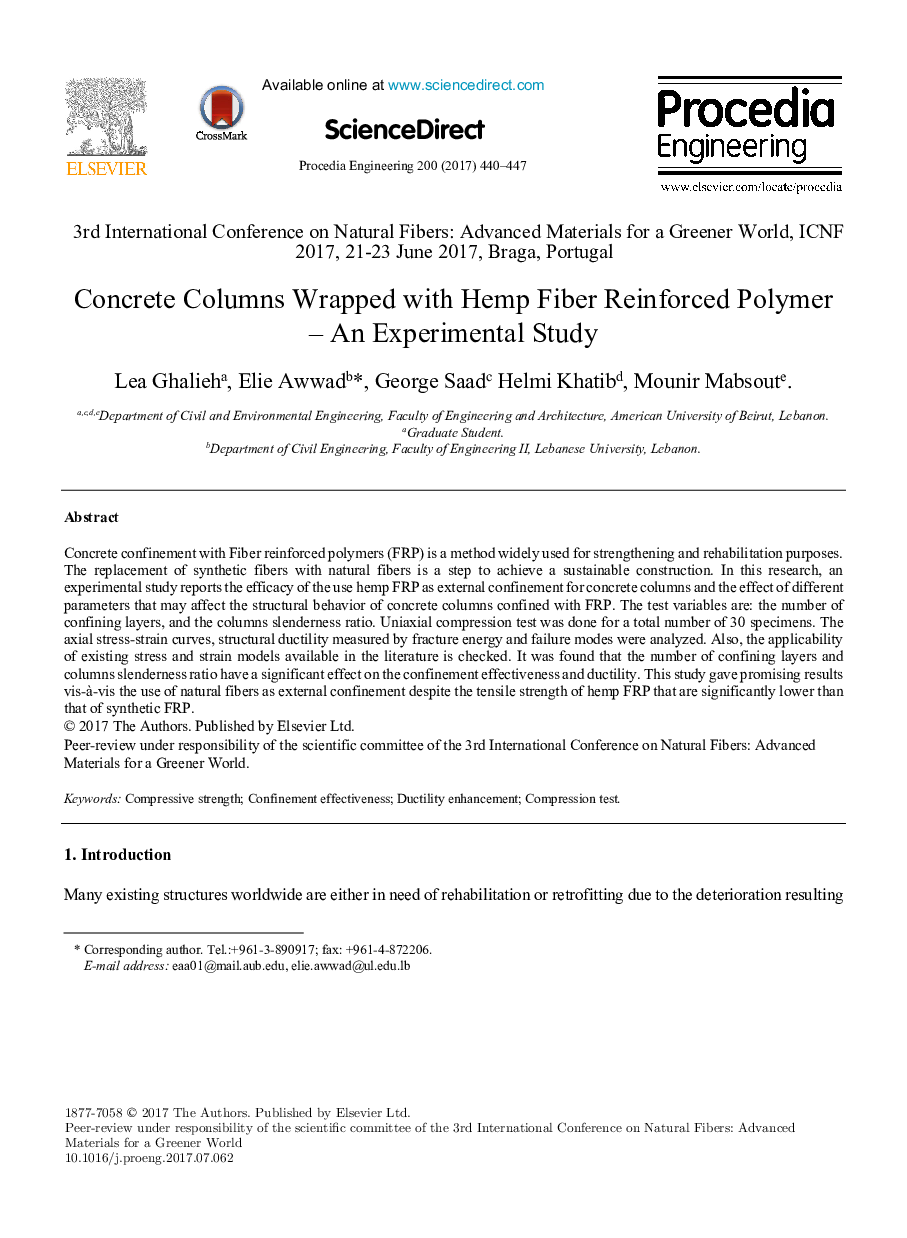| Article ID | Journal | Published Year | Pages | File Type |
|---|---|---|---|---|
| 5026723 | Procedia Engineering | 2017 | 8 Pages |
Abstract
Concrete confinement with Fiber reinforced polymers (FRP) is a method widely used for strengthening and rehabilitation purposes. The replacement of synthetic fibers with natural fibers is a step to achieve a sustainable construction. In this research, an experimental study reports the efficacy of the use hemp FRP as external confinement for concrete columns and the effect of different parameters that may affect the structural behavior of concrete columns confined with FRP. The test variables are: the number of confining layers, and the columns slenderness ratio. Uniaxial compression test was done for a total number of 30 specimens. The axial stress-strain curves, structural ductility measured by fracture energy and failure modes were analyzed. Also, the applicability of existing stress and strain models available in the literature is checked. It was found that the number of confining layers and columns slenderness ratio have a significant effect on the confinement effectiveness and ductility. This study gave promising results vis-Ã -vis the use of natural fibers as external confinement despite the tensile strength of hemp FRP that are significantly lower than that of synthetic FRP.
Related Topics
Physical Sciences and Engineering
Engineering
Engineering (General)
Authors
Lea Ghalieh, Elie Awwad, George Saad, Helmi Khatib, Mounir Mabsout,
